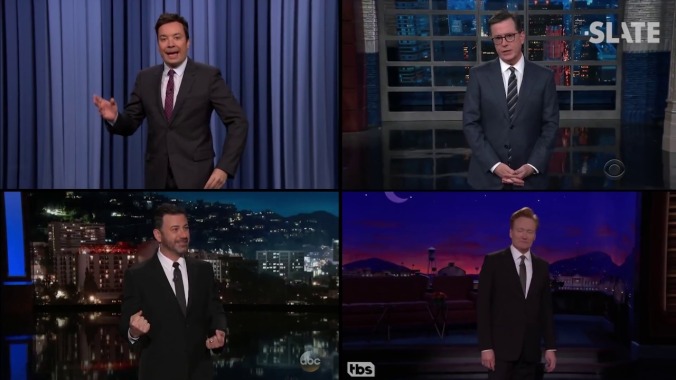Here’s the formula for writing a generic late-night joke
Talk shows require an insane amount of material. Four nights a week, late-night writers have to produce a monologue’s worth of jokes, plus desk bits, sketches, remote pieces, and whatever else the host is supposed to say. It’s a job that doesn’t exactly jive with the phrase, “I don’t feel funny today.” So, rather than waiting around for inspiration, late-night writers have taken to relying —whether consciously or unconsciously—on formula to write their jokes. A new video from Slate breaks down this formula and identifies the essential pieces of even the most generic monologue joke.
While Slate identifies at least eight different triggers that reliably result in laughter, a standard late-night joke is primarily concerned with the first two: Surprise and incongruity. The basic two-part structure of a joke (setup and payoff) has the surprise element baked into it: The setup establishes a familiar world or premise and the punchline introduces the element you didn’t see coming. Similarly, incongruity works by putting two disparate elements together and thereby forcing connective lines between them. Doesn’t this all sound really funny?
The “humor” element of comedy is what’s obviously missing from Slate’s video. It’s not enough to know the basic bones of a joke, or the theory behind why a punchline works. You still need to have some seed of a creative idea to write something people will want to hear or laugh at. The Jimmy Fallon Trump joke analyzed in the video gets a good laugh, but it’s unlikely the writer or the audience were thinking about comedy formulas when those funny words first hit their ears. After all, there’s a reason why late-night shows are written by comedy writers and not computers.
Send Great Job, Internet tips to [email protected]
